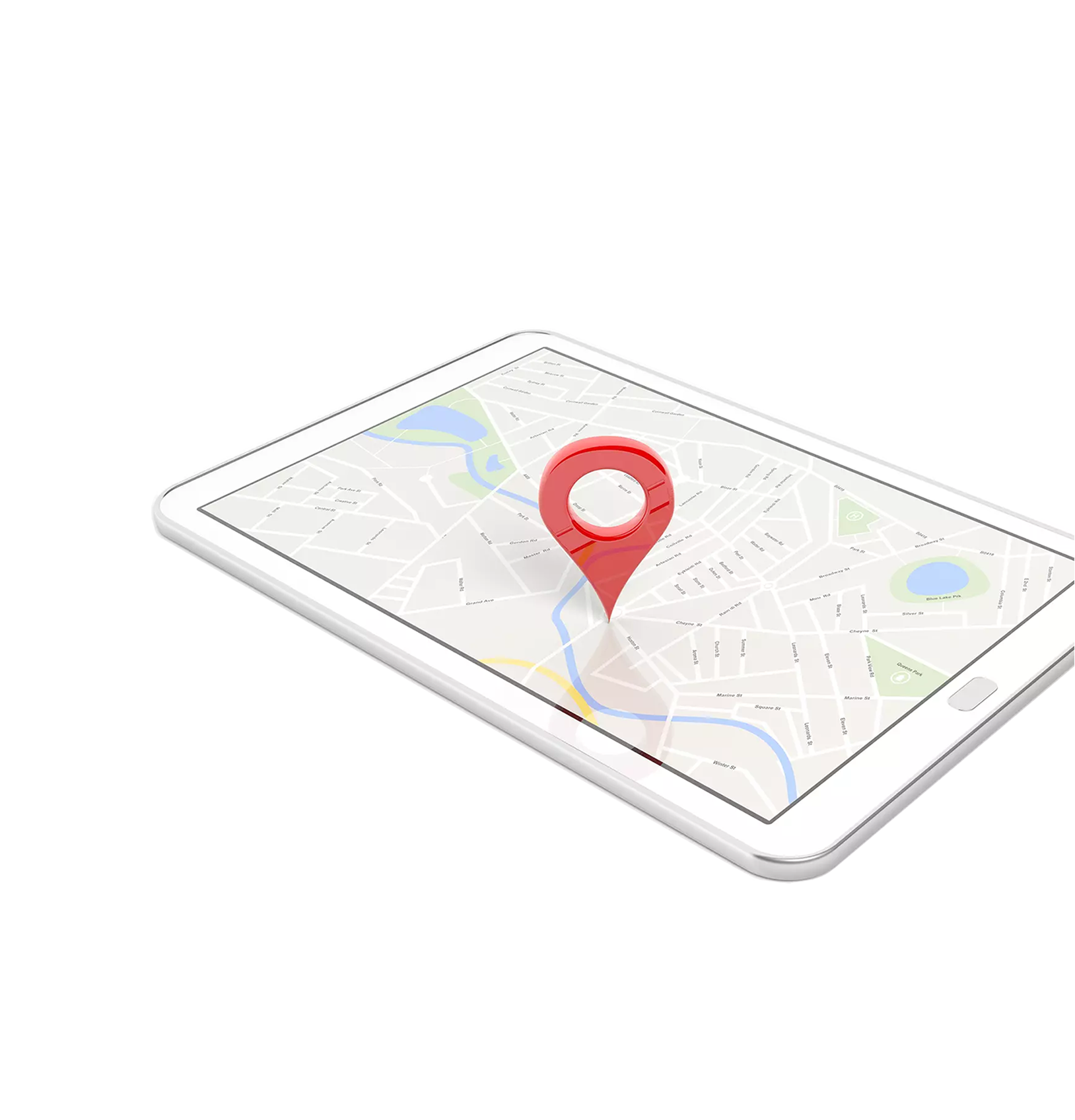Green Lights Only: How To Get Stakeholder Buy-In for Your TMS Solution Project
Green Lights Only: How To Get Stakeholder Buy-In for Your TMS Solution Project
Green Lights Only: How To Get Stakeholder Buy-In for Your TMS Solution Project
8 Oct 2025
 Kris Pazhayanoor | Senior Product Manager
Kris Pazhayanoor | Senior Product ManagerAt A Glance: What You’ll Learn
This blog explains how to secure full stakeholder support for your transportation management system (TMS) project and ensure your business moves forward with confidence and real value. Here’s the TL;DR:
Stakeholder mapping: Pinpoint which decision-makers matter and their core concerns.
Pain-to-possibility linking: Connect common logistics challenges—manual work, limited visibility, billing errors—to clear TMS solutions.
ROI-driven proposal: Outline how to build a business case with real cost reductions, operational efficiency and numbers tailored for CFO approval.
Early, active engagement: Involve all users and leaders from day one, with collaborative workshops and live product tours.
IT buy-in checklist: Pre-answer tough technology questions (integration, data security, cloud deployment) to win technical trust.
Risk-managed rollout: Tactics for minimizing disruption—covering timelines, support plans, change management and clear communication.
Partner advantage: The right TMS partner means easier implementation, expert support and faster results for your industry.

You’ve done the research. You understand that a transportation management system (TMS) has the potential to significantly reduce freight costs, enhance delivery performance and eliminate the repetitive manual tasks that have been a burden on your team for years. The future looks promising, but how do you secure the necessary approval?
Your CFO wants to see serious return on investment (ROI) projections before signing off on capital. IT already has a backlog and sees this as yet another integration headache. And logistics coordinators… well, they’re reluctant to give up their existing—if inefficient—spreadsheets and call-and-confirm routines.
Sound familiar?
Well don’t panic. All you need to remember is that the key to winning approval for a TMS lies in understanding and addressing the needs of each stakeholder. It's not just about feature lists or tech specs, it’s about people. You need to speak their language, demonstrate real value in their terms and build confidence. Let’s see how to do that in six smart, actionable steps.
Step 1: Identify Stakeholders and What Matters to Them
Stakeholder alignment starts with mapping out every player in the decision-making process, what matters to them and understanding what they’ll need to feel confident in moving forward. This is an operational shift and everyone from the C-suite to the loading dock will feel the impact so don’t forget your end users. Leaving logistics coordinators or dispatchers out of the conversation could cause major pushback later, even if leadership signs off.
Also, identify your executive sponsor—someone senior who believes in the project and has the clout to push it forward. This champion can help navigate resistance and keep momentum going when approval gets stuck.
Here’s a breakdown of who typically needs to be on board.
Chief Financial Officer (CFO)
Core Concerns: Budget, ROI, CapEx vs. OpEx.
How TMS Helps: TMS solutions significantly reduce transportation costs, automate billing and auditing to prevent overcharges and offer rapid ROI.
What They Need To Give the Green Light: ROI projections or clear benchmarking of where current inefficiencies will be improved. You can find more info on crunching the numbers in a later section.
Chief Operating Officer (COO)
Core Concerns: Operational efficiency, service levels.
How TMS Helps: TMS software optimizes carrier selection, route planning, load consolidation and reduces late or missed deliveries—improving end-to-end operations and boosting productivity.
What They Need To Give the Green Light: Operations KPIs showing service-level improvements (on-time delivery %, throughput), case studies/testimonials of efficiency gains and data tying TMS features to productivity and process improvements.
Chief Information Officer (CIO/IT)
Core Concerns: Integration complexity, data security.
How TMS Helps: Modern TMS solutions offer cloud deployment, pre-built ERP integrations, enterprise-grade security and artificial intelligence (AI) capabilities to streamline the implementation process.
What They Need To Give the Green Light: Technical integration roadmap, security certification details (SOC, ISO, GDPR compliance), API documentation, proof of compatibility with ERP/WMS/other systems.
Transportation/Logistics Managers
Core Concerns: Visibility, dispatch accuracy.
How TMS Helps: Real-time shipment tracking, simplified carrier management and automated alerts improve day-to-day performance.
What They Need To Give the Green Light: Carrier performance data, shipment visibility dashboards, real-life demos/trials showing dispatch accuracy and alert reliability.
Logistics Coordinators/Dispatchers
Core Concerns: Ease of use, job disruption.
How TMS Helps: Dock management features, AI load builders and intuitive interfaces reduce manual work, making their daily tasks smoother, not harder.
What They Need To Give the Green Light: Access to product demos, evidence of user-friendly workflows, training and onboarding plan that reduces transition friction.
Customer Service Teams
Core Concerns: Delivery issues, customer complaints.
How TMS Helps: Accurate ETAs and fewer delivery errors reduce inbound complaint volumes. Management by exception.
What They Need To Give the Green Light: KPI comparisons of pre-/post-TMS complaint rates, ETA accuracy reporting, customer satisfaction metrics from existing TMS users.
Purchasing
Core Concerns: Lack of visibility to inbound freight.
How TMS Helps: Accurate ETAs and better control and visibility over inbound freight
What They Need To Give the Green Light: Manufacturing/distribution scheduling KPIs, inbound ETA metrics.
Finance
Core Concerns: Many days spent auditing and paying freight invoices.
How TMS Helps: Fully verified and audited freight payments, accurate accrual reports, streamlined freight payment process.
What They Need To Give the Green Light: Freight audit savings, accounting process efficiency gains.
Step 2: Connect Pain Points to TMS Possibilities
Your organization may not be bleeding money—but even small inefficiencies add up fast in logistics. To make your case, link current pain points to measurable business outcomes. And make it specific, linking challenges and benefits for each department.
Here are common challenges we see and how a TMS solution addresses them:
Manual work slows everything down: TMS software automates carrier selection, shipment scheduling and tracking—all while reducing human error. So instead of spending hours on spreadsheets and emails, your team can move through tasks quickly and easily.
Missed or delayed deliveries hurt trust: Late shipments can cost shippers up to 3% of the invoice value in penalties or lost business. With a TMS, you have increased confidence of hitting delivery slots reliably and can dynamically reroute in real time, if needed, to avoid disruptions.
Limited visibility leads to bad decisions: Without centralized shipment data, your transportation teams are often “best-guessing”. TMS solutions provide real-time dashboards, comprehensive visibility, variance alerting and predictive ETAs, helping teams make proactive decisions.
Disputes and invoice errors waste time: The average company spends 25 minutes reconciling a single freight invoice. Advanced TMS automates freight audit and payment workflows to catch billing discrepancies early.
What’s most important in this step is that you tailor these benefits to the individual concerns of your stakeholders and the biggest challenges in your business. If your CFO is laser-focused on reducing cost per mile, highlight how smarter carrier selection alone can shrink transportation spend. If you’re experiencing a trend of poor customer reviews or churn, put the reliability and service elements of TMS implementation front and center.
Step 3: Crunch the Numbers for a Case They Can’t Ignore
Emotion wins attention. Numbers close deals.
Now you’ve won the hearts of your decision-makers, to secure buy-in you’ll need to win their minds as well. To do this, demonstrate how a TMS solution directly enhances the bottom line, aligning with business financial objectives and boosting profitability.
Start by laying out your current transportation spend and identifying what's driving up costs. Think rate inconsistencies, overtime, missed deliveries, customer penalties or time-consuming invoice reconciliation. And don’t neglect the harder to pinpoint inefficiencies like productivity drains and employee churn due to burn out. All of these things hit your bottom line.
From there, map those pain points to what a TMS can solve—faster planning, smarter carrier choices, fewer errors, better visibility, improved productivity—the list goes on.
You can obtain support from your potential vendor by requesting ROI calculators, business impact assessments and real-world case studies. These resources can help you showcase the measurable value of the system and strengthen your case with leadership. When using these tools, it's important to understand how to interpret the results. For instance, a high ROI or a positive business impact could indicate a strong case for the purchase decision.
Also, gain a strategic advantage by using your own numbers—such as shipment volume, carrier costs and hours spent on planning—to personalize the pitch. Grounding the proposal in real data makes it more relevant to your business and less likely to be overlooked.
It's not just about saying, "This tool will help." It's about showing exactly how it will help, with realistic outcomes that your team and leadership can easily visualize, making the benefits of a TMS more tangible.
And if you're not sure what a solid case looks like, take a look at this breakdown of TMS benefits. It offers a real-world perspective on what companies have achieved with the right solution.
Need a little extra backup? Many TMS providers, including Aptean, can provide compelling examples of other businesses that have benefitted. With industry expertise and proven results behind you, you'll be in a much stronger position to turn a "maybe" into a confident "yes."
Step 4: Engage Early, Engage Often
By ensuring your stakeholders are informed and involved from the project's inception, you're not just avoiding playing catch-up during the budget review. You’re also building a stronger case, as people tend to support what they help shape. This early involvement sets the stage for a more successful project.
Start by inviting key stakeholders into the conversation. Ask what’s not working in your current process. Get their take on what “success” should look like. When people feel seen and heard, they’re more likely to support the change—and more likely to speak up about potential roadblocks you can solve before they become deal-breakers.
Here’s a tip: organize a discovery workshop. Lay out your current challenges and explore what a TMS can solve. When you bring dispatchers, logistics leads, IT and operations into the room, you often uncover needs you wouldn’t think to ask about. For instance, your dispatchers might flag issues with driver communication or manual route matching. Your IT team might raise red flags about integration or data flow. These insights will shape what features you prioritize—and what vendors make your shortlist.
Remember, it's not just about having conversations with your stakeholders. It's also about showing them something tangible. This could be in the form of product tours and live demos, which can go a long way in demystifying the technology and building their buy-in.
Here’s a recap on how you can engage stakeholders meaningfully:
Run collaborative workshops to explore use cases and define success metrics
Invite department-specific feedback on workflows, pain points and goals
Share early product demos to show how the system works for their role
Use what you learn to refine your vendor evaluation and business case
Early engagement is about creating internal advocates. When your users help shape the process, they’re far more likely to support the solution once it goes live. Early engagement leads to easier adoption and quicker realization of benefits—and that’s how you build long-term success.
Step 5: Pre-Answer the IT Department’s Toughest Questions
We all know IT will come with a list of requirements longer than your holiday shopping list—and rightly so. A TMS touches sensitive data, integrates with multiple systems and must be both secure and scalable.
So come prepared. Here’s what IT will want to know:
Deployment Model: Most software should be deployed in the cloud today for faster deployment, scalability and configurability. So come ready with details of cloud deployment credibility from your vendors.
Integrations: Does it integrate with your ERP, WMS and other carrier platforms? Look for APIs, EDI support and pre-built connectors.
Data Security: Is it SOC 2 compliant? What encryption standards does it use? What’s the vendor’s uptime record—and do they provide regular security updates and compliance audits?
Implementation Timeline: How long will setup take? How many internal resources are required?
Support and SLAs: Prepare details about the support packages of shortlisted vendors. Covering things like if 24/7 support is provided, what escalation processes look like and how easy support portals are to access. You’ll earn serious credibility with IT if you come armed with this info. Better yet, invite your TMS vendor to a joint call where these questions can be addressed transparently. This also gives IT a chance to build trust with the vendor team—an often overlooked piece of the puzzle.
Step 6: De-Risk the Rollout
The final roadblock? Fear of disruption. Even the most compelling business case can stall if stakeholders imagine months of chaos during rollout.
That’s why you need a concrete, realistic implementation plan that shows how you’ll manage risks and minimize operational impact. Thankfully, experienced vendors should have most of this prepped and ready to go, so you can follow a pre-configured step-by-step rollout plan.
That plan should cover:
Timeline: Include pilot phases, training, testing and go-live dates. Most mid-sized implementations take 3–6 months.
Resource Requirements: Who on your team will be involved and for how long? Lean on your vendor to minimize internal lift.
Training and Support: Will you have on-site training? Remote onboarding? User guides and helpdesk access?
Change Management: Plan communications to affected teams, regular check-ins and feedback loops post-launch.
Importantly, don’t pretend it will be pain-free. Instead, demonstrate that the short-term disruption will lead to long-term gains—like a reduction in delivery exceptions or fewer manual route changes.
Green Lights Ahead: Ready to Win Stakeholder Support?
The path to stakeholder buy-in for a TMS project is about turning skepticism into shared ownership and nudging every department from “maybe later” to “how soon can we start?”
Yes, every TMS rollout will face snags—from IT’s integration deep dives to end-user jitters about new workflows. However, if you’ve followed these steps, you already know how to anticipate concerns, tailor value points to your audience and keep everyone informed from kickoff to go-live. Especially when you’re transparent about challenges and communicate benefits in simple, practical terms, long-term trust and faster adoption become possible.
That’s where partnering with the right provider makes a difference. Aptean is not just a TMS software vendor—we’re a trusted partner. We bring a proven, industry-specific solution backed by cloud-based innovation and expert support that stands with you every step of the way.
With years of experience across sectors such as food and beverage, manufacturing and logistics, our team can help you clearly illustrate benefits, craft clear implementation plans and offer live demonstrations to win over your stakeholders. And, we can provide a host of case studies, testimonials and customer references of businesses like yours benefitting with our software. After all, having a trusted partner who understands your business as deeply as you do is the kind of green flag every stakeholder wants.
So, are you ready to rally your decision-makers and get your project signed off? Get in touch with one of our routing experts today to schedule a demo.
Prêt à transformer votre entreprise ?
Réservez une démonstration à l'heure qui vous convient et découvrez comment vous pouvez gérer une opération logistique plus légère, avec moins de surprises et plus de contrôle.



